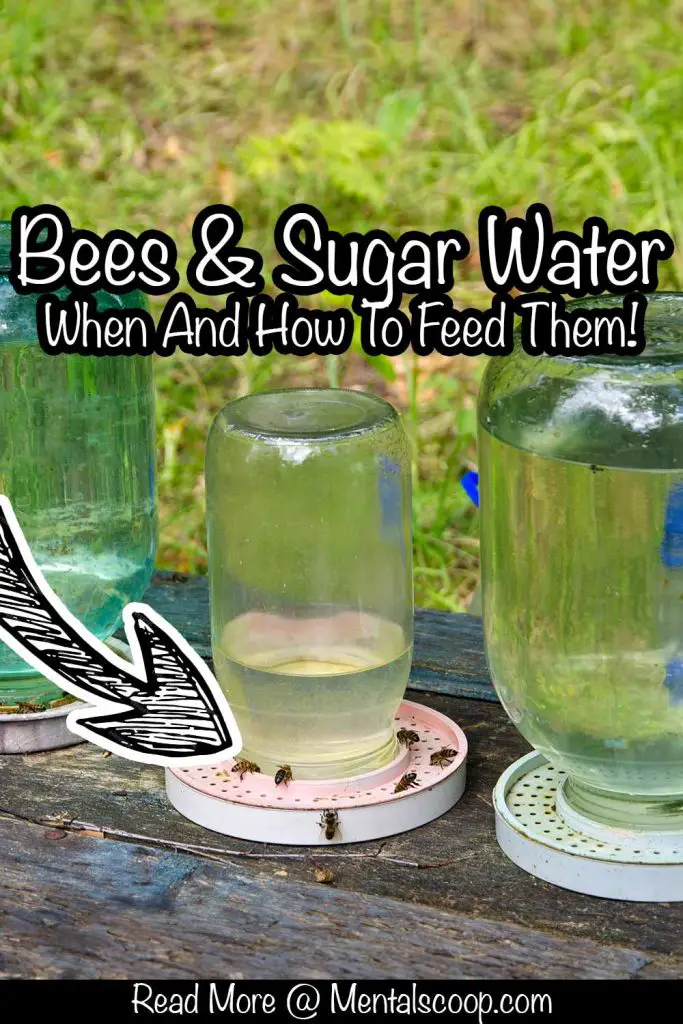Bees & Sugar Water, When & How To Feed Them!

Bees, those tiny yet mighty creatures, play a crucial role in our ecosystem as pollinators. However, there are times when they may need a little extra support, especially during periods of scarcity or when establishing a new colony.
One way to provide this support is by feeding them sugar water. In this comprehensive guide, we’ll delve into the ins and outs of feeding bees sugar water, including when it’s necessary, how to do it properly, and what to keep in mind.
Understanding Bee Nutrition
Before diving into feeding bees sugar water, it’s essential to understand their nutritional needs. Bees primarily feed on nectar and pollen gathered from flowers. Nectar provides carbohydrates, while pollen offers proteins, fats, vitamins, and minerals.
However, there are instances when natural food sources are scarce, leading beekeepers to intervene with supplementary feeding.
When to Feed Bees Sugar Water
Knowing when to feed bees sugar water is crucial for their well-being. This often depends on factors such as the time of year, weather conditions, and the strength of the colony. Early spring, for example, may be a critical time for feeding to help colonies build up strength after winter.
Additionally, during periods of drought or when flowering plants are scarce, bees may require supplementary feeding to prevent starvation.
Recognizing Signs of Starvation
One of the primary reasons for feeding bees sugar water is to prevent starvation. It’s essential for beekeepers to recognize the signs of starvation in a colony, such as decreased activity, dwindling population, and empty honey stores.
By monitoring these indicators, beekeepers can intervene with feeding before the situation becomes dire.
Types of Sugar Water Solutions
Not all sugar water solutions are created equal when it comes to feeding bees. The most common solution used is a mixture of white granulated sugar and water. However, there are variations, including using raw or organic sugar, as well as adding essential oils or supplements for added nutrition.
Understanding the different options available can help beekeepers choose the best solution for their colonies.
Preparing Sugar Water
Proper preparation of sugar water is essential to ensure it provides the necessary nourishment for bees without causing harm. The recommended ratio for sugar water is typically 1:1 (one part sugar to one part water) for stimulating brood production and colony growth, or 2:1 (two parts sugar to one part water) for providing a more concentrated energy source during times of dearth.
Feeding Methods
There are several methods for feeding sugar water to bees, each with its advantages and considerations. Common methods include hive-top feeders, entrance feeders, frame feeders, and division board feeders. The choice of feeding method may depend on factors such as hive type, weather conditions, and the strength of the colony.
Monitoring and Adjusting
Once sugar water feeding begins, it’s essential to monitor the colony’s response and adjust feeding as needed. Regular inspections can help assess the consumption rate of sugar water, colony strength, and overall health. Adjustments may be necessary based on factors such as weather patterns, nectar flows, or changes in colony size.
Potential Risks and Considerations
While feeding bees sugar water can be beneficial, there are potential risks and considerations to keep in mind. These include the risk of inducing robbing behavior from neighboring colonies, contamination from mold or bacteria in feeders, and disrupting natural foraging behaviors. Mitigating these risks requires careful planning and management.
Supporting Bee Health
Feeding bees sugar water can be a valuable tool for supporting bee health and well-being, especially during times of scarcity or when colonies are establishing themselves. By understanding when and how to feed them properly, beekeepers can ensure their colonies thrive and continue to fulfill their vital role as pollinators in the ecosystem.
By following the guidelines outlined in this article and staying attuned to the needs of their colonies, beekeepers can contribute to the conservation and preservation of these essential insects for generations to come. Remember, a little sugar water can go a long way in helping bees thrive!

More interesting articles you may be interested in reading:

